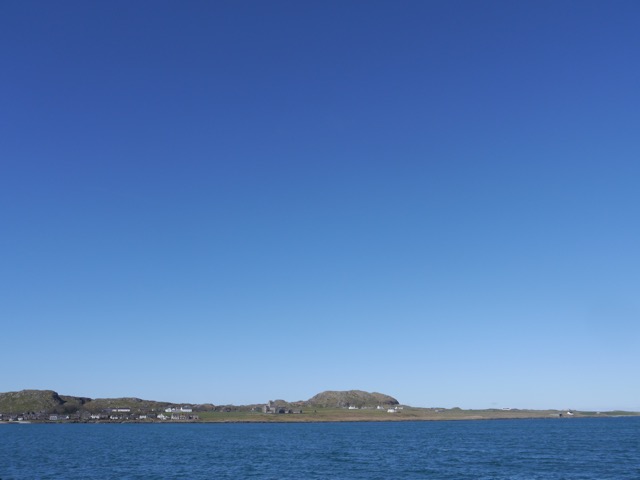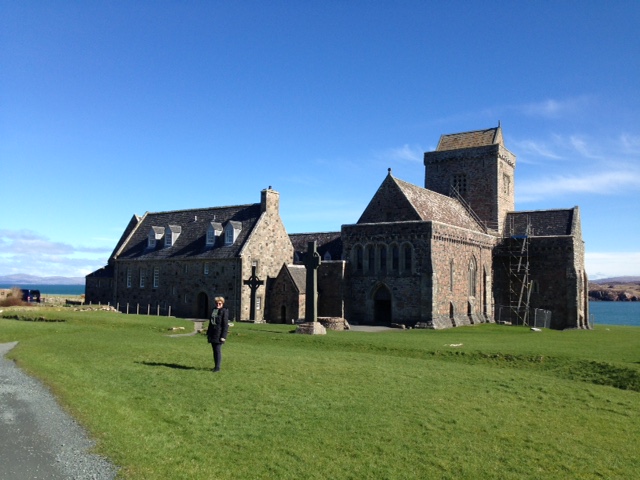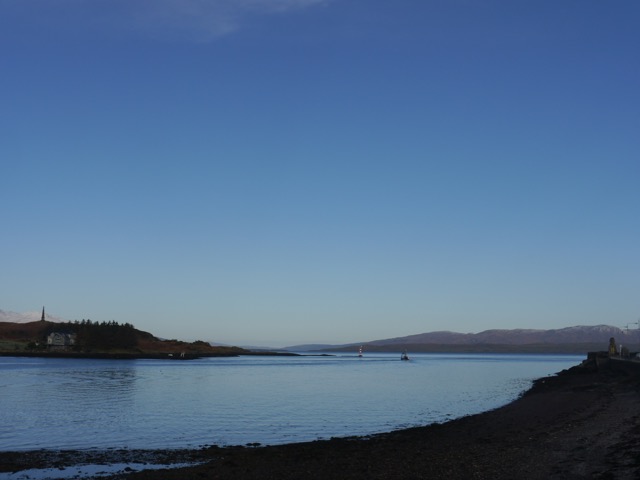Photo: After a day of snow and sleet, the start of my pilgrimage dawns clear and bright.
Oban, Scotland
The start of my journey seems to really start when I leave the mainland and head out across the sea. I will travel by boat, road and by boat again before I reach my final destination – The Isle of Iona.
In the brilliant sunshine and standing on the top deck, I breathe in this stunning day and I feel so full of anticipation and hope for the months ahead.
Countless numbers of people before me, have taken this same route in their own journeys of pilgrimage, as Iona has for thousands of years been considered a sacred place.


Photos: 1. First glimpse of the Isle of Iona. 2. The Mother Ship: Standing in front of the abbey for the first time.
It is believed that the Druids first came to Iona – a very long time ago. Things really got moving around 435 AD when St Columba arrived (along with twelve Irish monks) to establish an abbey, and then later around 1200, the Benedictines arrived. The Vikings also came, but not in peace. They came to raid, ransack and pillage because Iona was still a far-flung corner of their kingdom.
In the mid 8th century it was a flourishing wealthy centre of Celtic arts (manuscript illumination, stone carving and jewellery), learning and religious life. It is believed that the Book of Kells was started here before the monks were finally driven out and returned to Ireland, taking their partially completed manuscripts with them.
Such was the significance of the island’s sacrosanct prominence, for some hundreds of years, 48 Scottish kings (Macbeth and Duncan included), various influential Chieftains, along with kings from Ireland, France and Norway, made their ritualistic final journey across land and sea to be buried here. Many of those ancient weather-worn tombstones can be seen lining the cloister walls of the abbey today.

